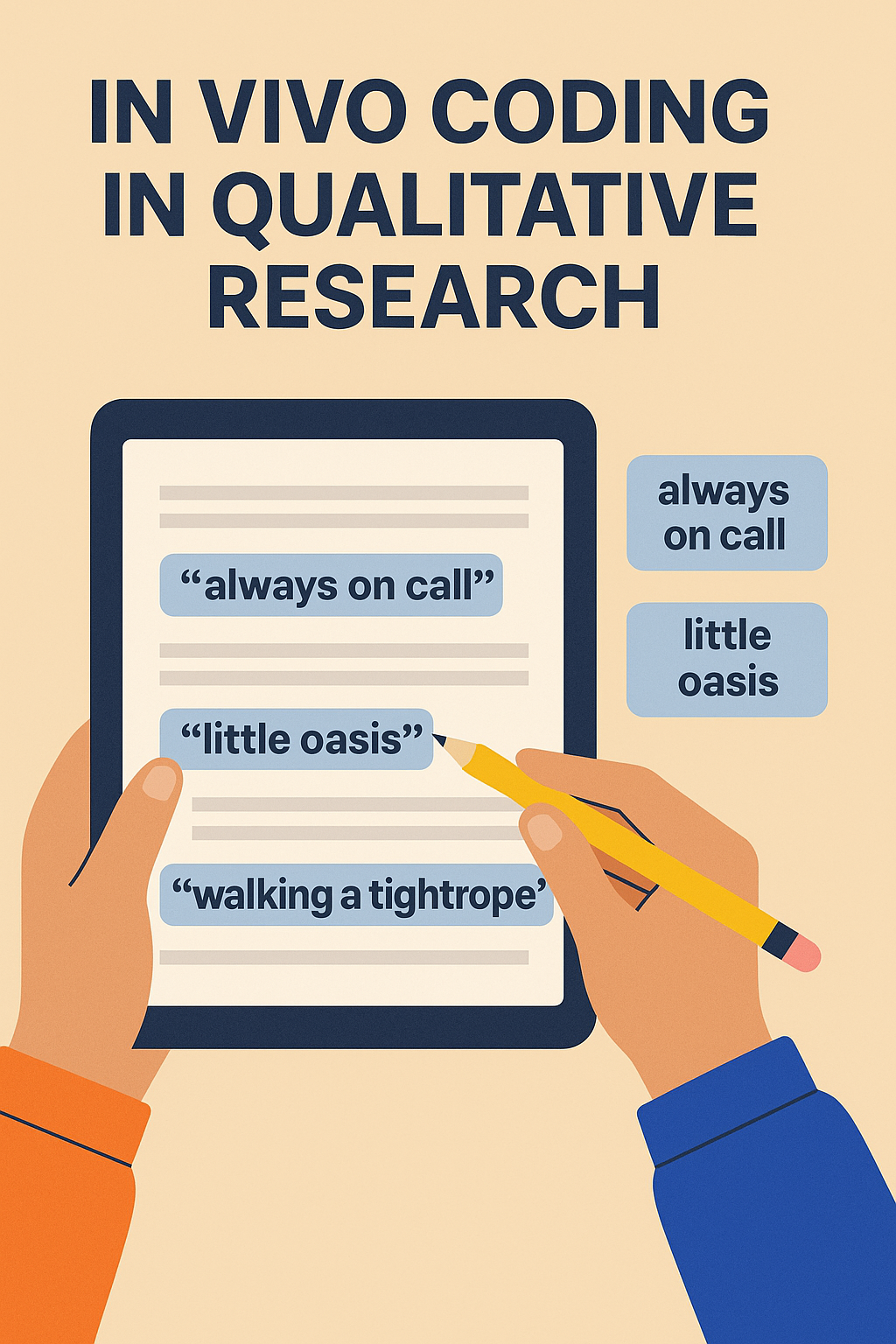
Imagine scrolling through a transcript and pausing at a phrase that stops you in your tracks: “I’m always on call,” “like a little oasis,” or “walking a tightrope.” These aren’t just quotes—they’re insight-infused phrases waiting to guide your analysis. In vivo coding unlocks these moments, making participant terminology the actual lenses through which you view your data.
At its core, in vivo coding means using participants’ exact words or short phrases as codes—no translation, no abstraction. Like a linguistic mirror, these codes preserve meaning, cultural nuance, and emotional weight that researcher-driven labels might dilute. It’s an inductive, grounded theory approach helping you stay true to lived experiences.
Tools like UserCall support in vivo coding by letting you highlight quotes directly and pull quotes automatically from transcripts during AI-assisted analysis. These quotes can be tagged, grouped, and thematically connected—while preserving the exact language that gave rise to the insight. The tool also helps uncover recurring phrases across sessions so you can stay grounded in what users actually say, even when working with dozens or hundreds of responses.
Here are three real-world examples where in vivo coding brings vivid participant insights to life:
“I feel like I’m always on call.”
Coded literally, this phrase reveals the blurred boundaries of remote work culture.
“Little oasis”
Through this small phrase, gardeners express their sanctuary-seeking behavior in concrete terms.
“Dropping the ball” / “Like a family”
These phrases signal emotional frameworks (responsibility, belonging) that emerge organically from participants, not predefined scales.
Use it when you're:
Skip or limit in vivo coding when:
AI assisted qualitative analysis tools like Usercall allowsyou to:
It’s especially helpful when you're handling multiple interviews and want to surface repeated language fast, without skipping the richness of human speech.
A hybrid coding approach balances the power of in vivo with analytical flexibility:
⚡ UserCall’s AI can suggest code groupings or synthesize themes, but starting with in vivo codes ensures your foundation is built on user voice—not assumptions.
In a healthtech study, multiple caregivers described managing meds:
“It’s like walking a tightrope.”
This phrase wasn’t just poetic—it framed their emotional journey: tension, risk, error fear. Recognizing it as a core in vivo code shifted product strategy: onboarding changed to include visual safety nets and messaging shifted toward support and reassurance.
Try this in a spreadsheet or coding tool:
Start with 5–10 transcripts, tag exact phrasing that sticks out, and let patterns emerge from the ground up.
In vivo coding is more than a technique—it’s a mindset. A commitment to listening first and labeling second. When you use a tool like UserCall to scale that practice across interviews, it becomes possible to extract meaningful, human insights at scale without sacrificing nuance.
Remember: The most memorable insights often come from the exact words people use. Let them guide the analysis—and let your coding process stay rooted in the truth of lived experience.